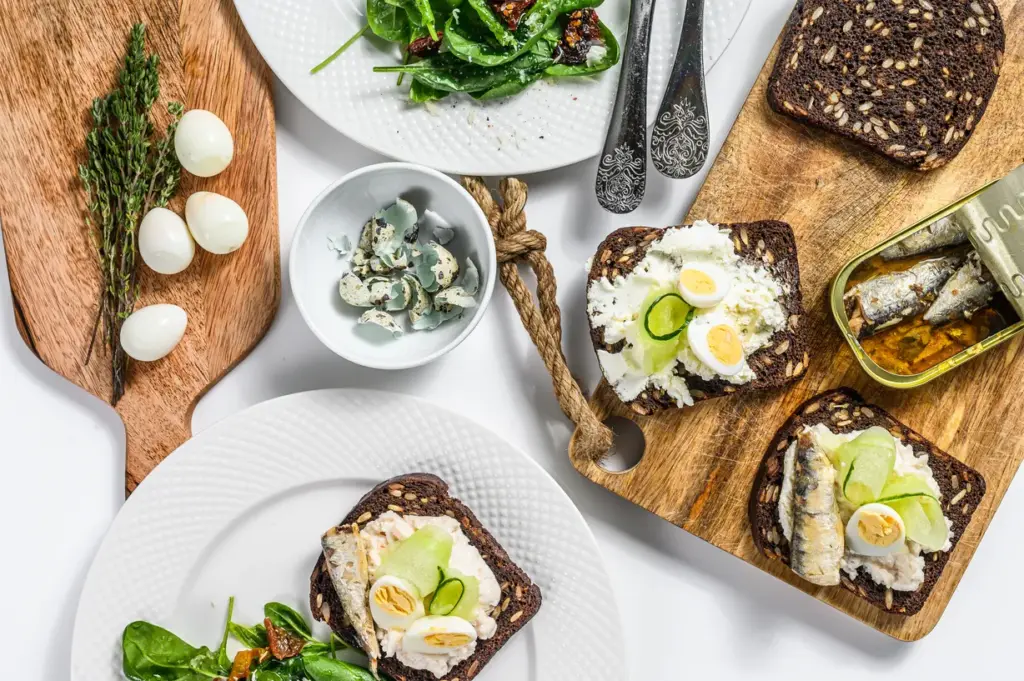Scandinavian Cuisine: From Smørrebrød to Nordic Desserts
Scandinavia is not just famous for its breathtaking landscapes and rich Viking history but also for its unique culinary traditions. This region, comprising Denmark, Norway, and Sweden, offers a gastronomic experience that is both simple and sophisticated. Whether you are an epicure or simply enjoy trying new foods, Scandinavian cuisine should be on your must-try list.
The Foundation of Scandinavian Diet
Scandinavian cuisine heavily relies on fresh, seasonal, and locally-sourced ingredients. Given the harsh winters, traditional foods often include preserved items like pickled vegetables and cured meats. Seafood also plays a significant role, thanks to the region’s extensive coastline. Fish like herring, salmon, and cod are staples of the Scandinavian diet.
Whole grains, dairy, and root vegetables such as potatoes and carrots are also essential. The cuisine emphasizes natural flavors, often enhanced with herbs like dill and parsley. The common use of fermented foods further enriches the nutritional value and flavor profile of Scandinavian dishes.
Smørrebrød: The Danish Open-Faced Sandwich
If there is one dish that epitomizes Danish cuisine, it is Smørrebrød. These open-faced sandwiches are both visually appealing and delicious. Typically served on rye bread (rugbrød), they are topped with a variety of toppings, including meats, fish, cheese, and vegetables.
The beauty of Smørrebrød lies in its versatility. Whether you prefer a traditional herring and onion combination or more modern toppings like avocado and smoked salmon, there is a Smørrebrød for every taste. This dish is often accompanied by a chilled beer or a shot of aquavit for a truly authentic experience.
Swedish Meatballs: Much More Than IKEA
While IKEA might have popularized Swedish meatballs worldwide, the authentic version offers a richer, more complex flavor. Traditionally made from a mix of pork and beef, these meatballs are seasoned with nutmeg and allspice. The key to their tenderness lies in the addition of milk-soaked breadcrumbs.
Swedish meatballs are typically served with lingonberry sauce, creamy gravy, and boiled potatoes or mashed potatoes. Some recipes may even include pickled cucumbers on the side. This hearty dish is comfort food at its finest, making it a must-try when visiting Sweden.
Norwegian Gravlax: Cured Salmon at its Best
Gravlax is a traditional Norwegian dish made by curing salmon with a mixture of salt, sugar, and dill. The process takes several days, during which the fish absorbs the flavors and develops a delicate texture. Gravlax is usually served thinly sliced, accompanied by mustard sauce and bread.
This dish offers a unique blend of sweetness and saltiness, making it a sublime appetizer or a light meal. It pairs wonderfully with a glass of white wine or a traditional Scandinavian schnapps. For those looking to delve into the subtleties of Scandinavian cuisine, Gravlax is a wonderful starting point.
Acquavit and Other Scandinavian Spirits
No exploration of Scandinavian cuisine would be complete without mentioning its traditional spirits, particularly Aquavit. This potent liquor, flavored with herbs like dill and caraway, varies slightly from country to country but is universally loved in Scandinavia. It’s often consumed during festive occasions and is a staple at Christmas and Midsummer celebrations.
Another popular drink is Glogg, a type of mulled wine enjoyed during the winter months. Made with red wine, spices like cinnamon and cloves, and sometimes fortified with a splash of brandy or vodka, Glogg is a warming treat perfect for cold Scandinavian evenings.
Nordic Desserts: A Sweet Ending
Scandinavian desserts are the perfect way to end a hearty meal. One popular dessert is Kanelbullar, or cinnamon buns. These delicious pastries, often enjoyed with coffee, are a staple in Sweden. In fact, the Swedes love them so much that they have a dedicated day called Kanelbullens dag, celebrated every October 4th.
Another exquisite treat is the Danish pastry known as Wienerbrød. Originating in Denmark, these flaky, buttery pastries come in various shapes and can be filled with custard, jam, or marzipan. In Norway, you might encounter Krumkake, a waffle cookie rolled into a cone shape and filled with whipped cream or jam.
Why You Should Experience Scandinavian Cuisine
Scandinavian cuisine offers a unique blend of flavors and textures that are both comforting and sophisticated. The emphasis on fresh, natural ingredients ensures a memorable gastronomic experience. Besides, each dish reflects the rich cultural heritage and traditions of the region.
Exploring Scandinavian cuisine is not just about satisfying your taste buds; it’s also an invitation to experience the rich history and culture of Denmark, Norway, and Sweden. Whether you are dining on Smørrebrød in a Danish café or enjoying a hearty bowl of Swedish meatballs, you are participating in a culinary tradition that has been passed down through generations.
Planning Your Culinary Trip
If you are planning to explore Scandinavian cuisine, here are a few tips. First, research and plan your itinerary around local food festivals and farmers’ markets. These events offer an excellent opportunity to sample a variety of local foods and interact with locals.
Consider taking a cooking class to learn how to prepare traditional dishes. Many Scandinavian cities offer culinary tours that include visits to local markets, food tastings, and cooking demonstrations. Finally, do not hesitate to ask locals for restaurant recommendations. Scandinavians take pride in their cuisine and are often more than happy to share their favorite dining spots.
Conclusion
From the versatile Smørrebrød to the sweet and delicate Kanelbullar, Scandinavian cuisine is a delightful blend of tradition and innovation. Each dish tells a story, offering a glimpse into the region’s rich cultural heritage. As you savor each bite, you’ll find yourself falling in love with the simplicity and sophistication that defines Scandinavian food.
So, whether you are a seasoned traveler or someone who simply loves good food, a culinary journey through Scandinavia promises to be a memorable adventure. Pack your bags, prepare your palate, and get ready to explore the rich and diverse world of Scandinavian cuisine.



